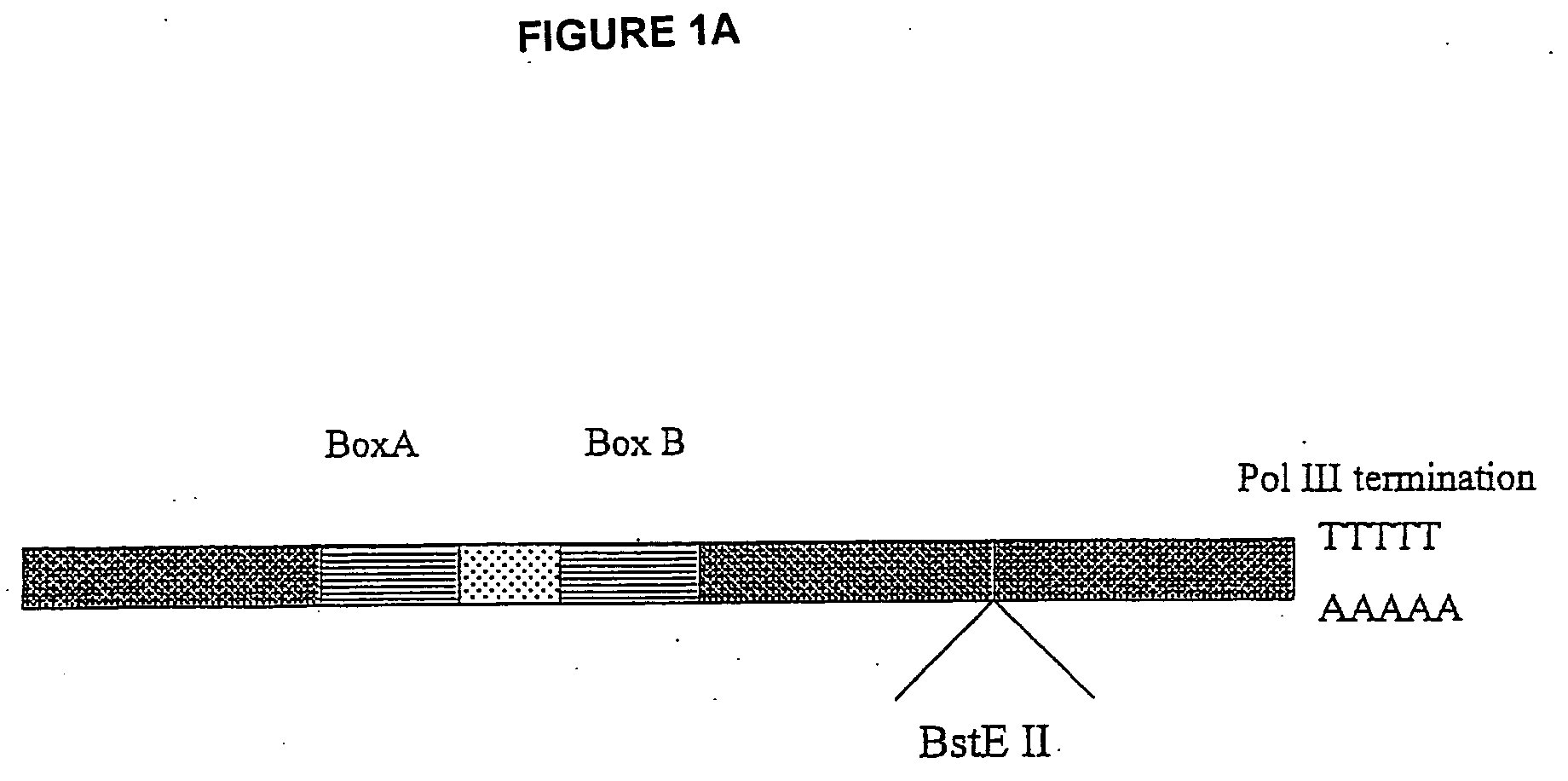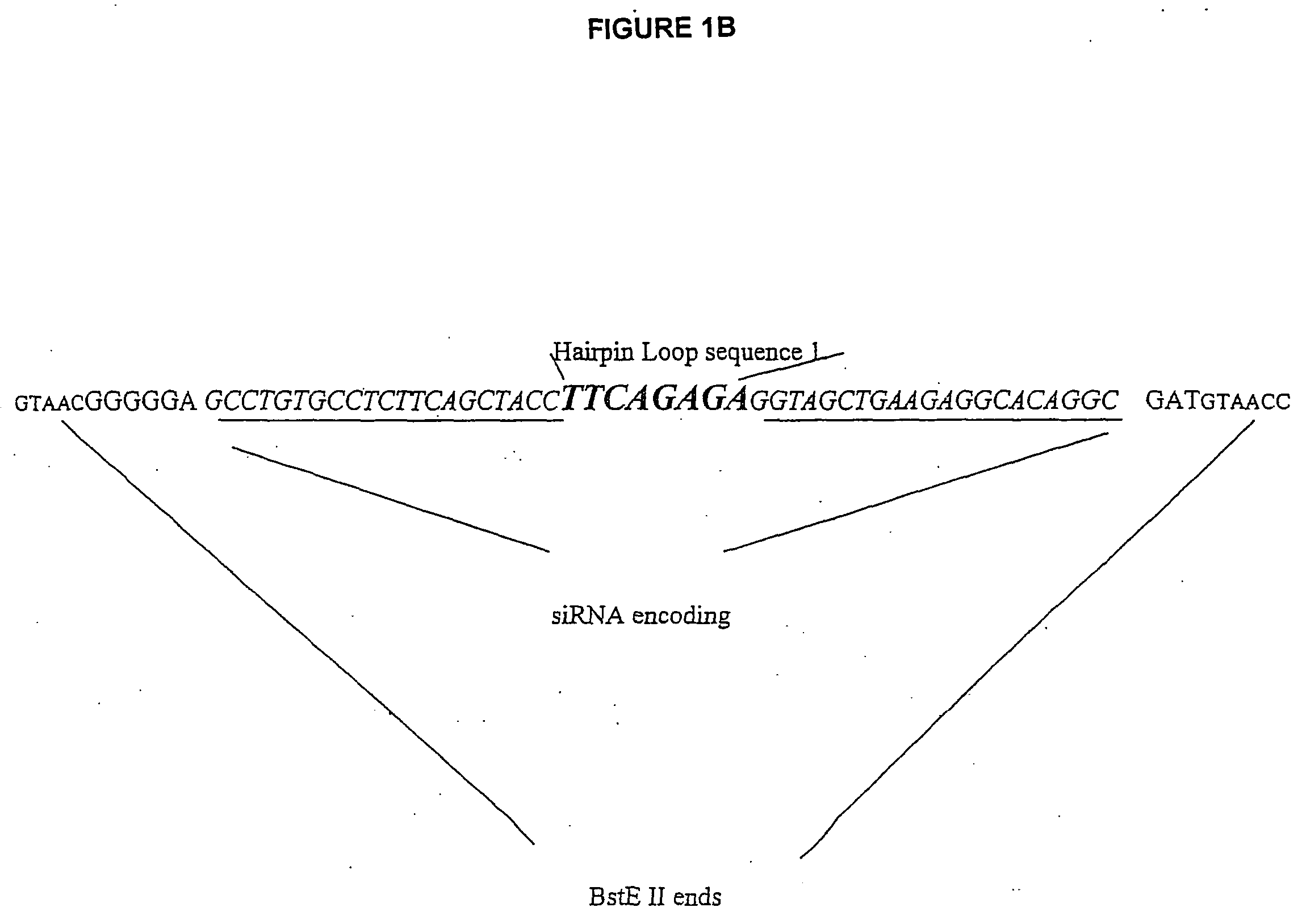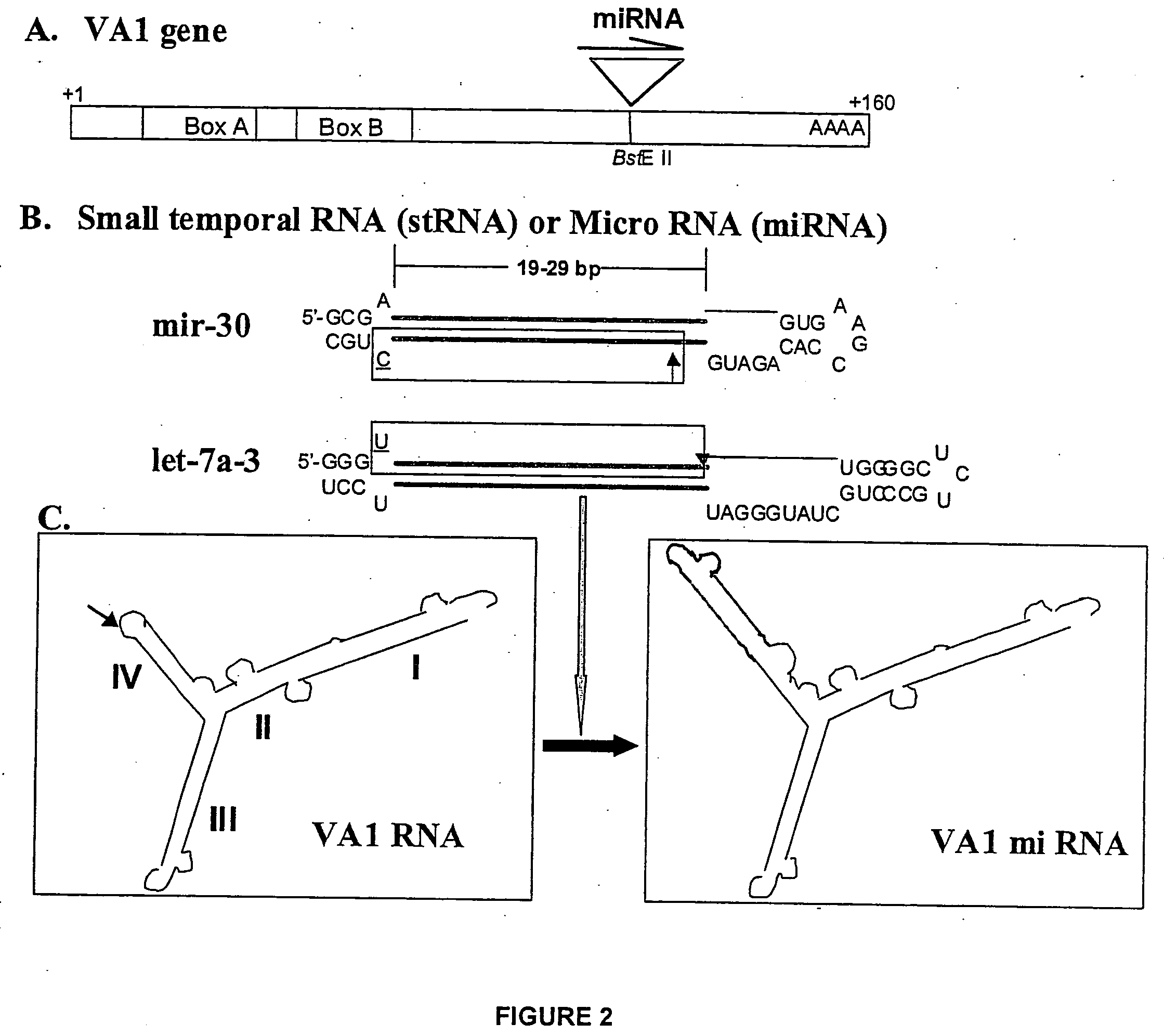Adenoviral VA1 Pol III promoter system for RNAi expression
a technology of promoter system and adenoviral va1, which is applied in the field of rna interference (rnai), can solve the problems of ineffectiveness, high efficiency, and inability to meet the needs of rna silencing hairpins, and achieves the best rna silencing hairpins
- Summary
- Abstract
- Description
- Claims
- Application Information
AI Technical Summary
Benefits of technology
Problems solved by technology
Method used
Image
Examples
example 1
[0038] VA1-miRNAs and VA1-siRNAs can contain 1) 21-nt sense, 2) 4, 8, or 9 base loop for siRNA or miRNA (mir-30 or let-7a-3), and 3) 21-nt antisense strand complementary to a HIV-1 rev target (total -50-nt). To make inactive mutant mi- or si-RNA variants, 4-nt in the middle of the stem sequences were mutated to be non-complementary to the target. BstEII restriction fragments containing mi- or si-RNA sequences are prepared from synthetic oligonucleotides, which share 12 bases of complementary sequence at their 3′ end. These were annealed and the primer ends extended using Taq polymerase and several rounds of PCR. The wt and mt mi-or si-RNA sequences are cloned into the BstEII site of pVA1 (FIG. 1A). The sequences of the loops are: 4 base loop: TTAA [SEQ ID NO: 4], 8 base loop: GAAGCTTG [SEQ ID NO: 5](underlined: HindIII site), and 9 base loop: TTCAAGAGA [SEQ ID NO: 6].
example 2
[0039] VA1 -siRNA expression constructs targeting rev site II were co-transfected with a rev-EGFP fusion construct. (FIG. 3) The various VA1 shRNA chimeric constructs or a U6 promoter siRNA expression construct were transfected using a cationic lipid into human 293 cells. Forty eight hours after transfection, RNAs were isolated from the cells and electrophoresed in a 6% denaturing polyacrylamide gel. The RNAs were electroblotted to a nylon membrane and hybridized with a 32p labeled synthetic DNA oligonucleotide complementary to the antisense sequence of the shRNA or siRNA.
example 3
[0040] Several different loop sizes and the relative orientations of the sense and antisense strands were tested by co-transfecting VA1 -siRNA constructs with pNL4-3 in human 293 cells. Plasmids encoding the various constructs were co-transfected with HIV-1 proviral DNA into human 293 cells and HIV-1 p24 assays were carried out on samples taken at the times indicated. The results (FIG. 4) demonstrate that an 8 base loop was among the most effective at generating a functional siRNA, and that the relative orientation of sense and antisense (#1 and #2) do not appear to affect the efficacy of the siRNAs.
PUM
 Login to View More
Login to View More Abstract
Description
Claims
Application Information
 Login to View More
Login to View More - R&D
- Intellectual Property
- Life Sciences
- Materials
- Tech Scout
- Unparalleled Data Quality
- Higher Quality Content
- 60% Fewer Hallucinations
Browse by: Latest US Patents, China's latest patents, Technical Efficacy Thesaurus, Application Domain, Technology Topic, Popular Technical Reports.
© 2025 PatSnap. All rights reserved.Legal|Privacy policy|Modern Slavery Act Transparency Statement|Sitemap|About US| Contact US: help@patsnap.com



